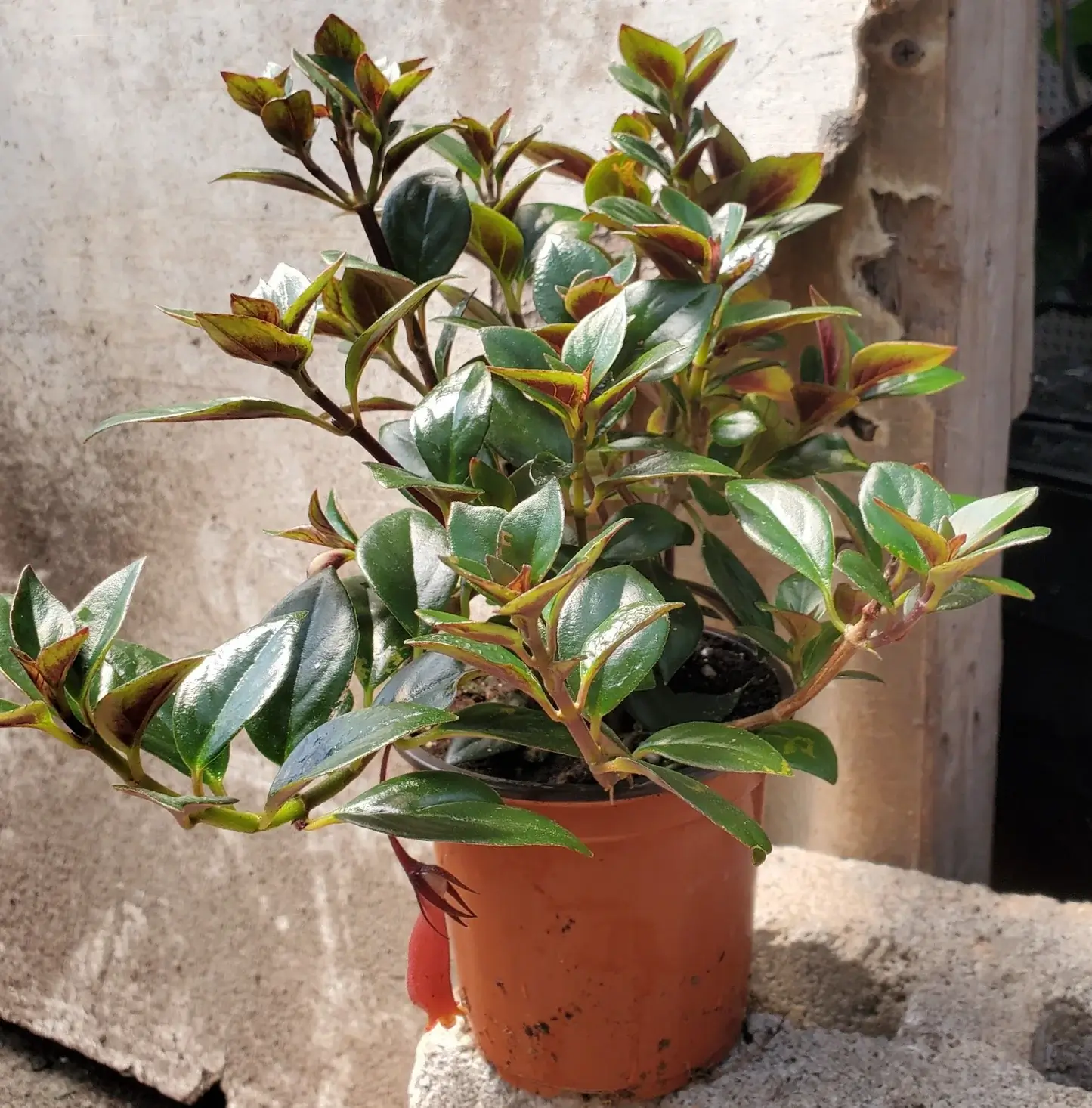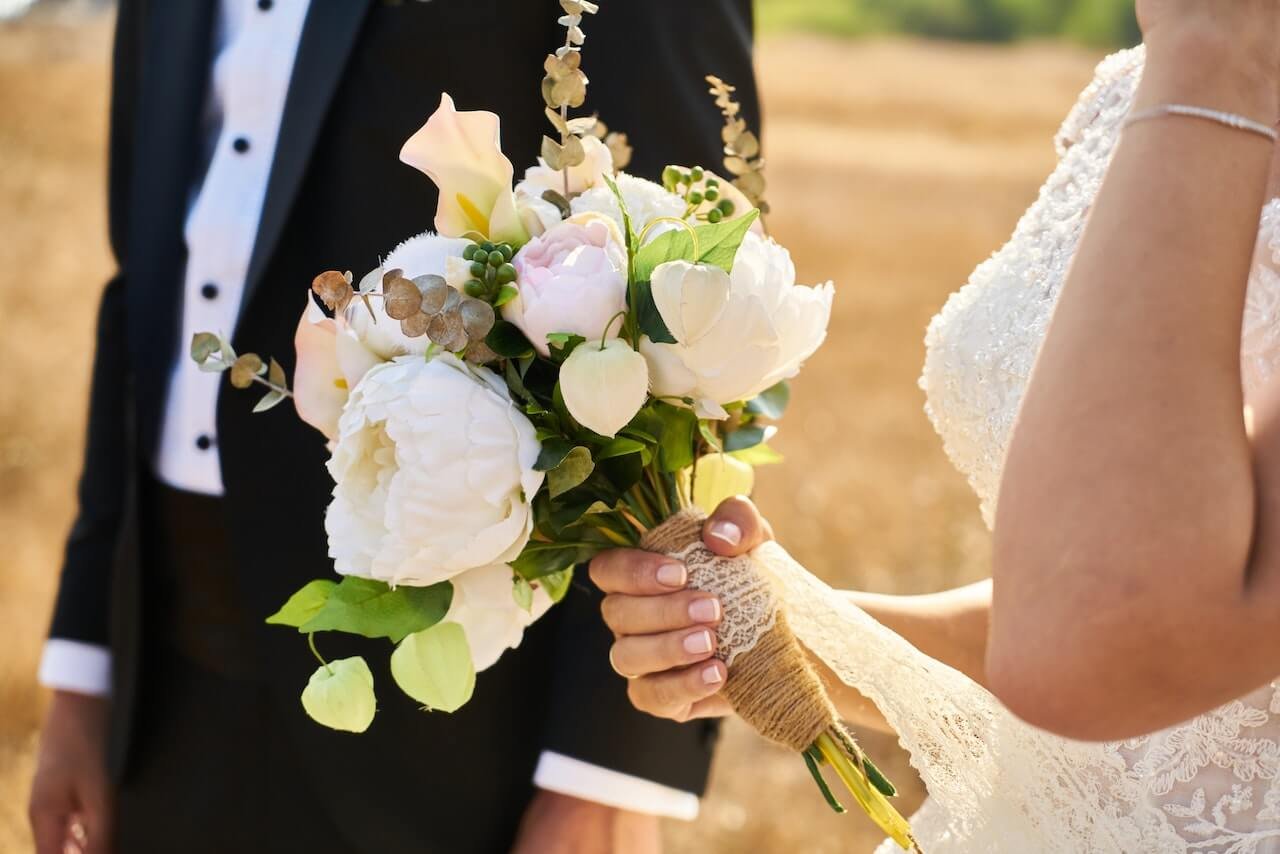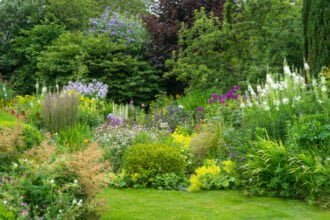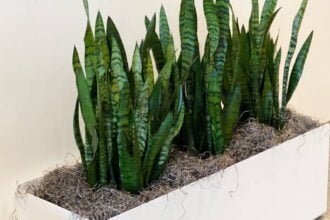Columnea gloriosa, more commonly known as the goldfish plant, is a beautiful houseplant with bright orange-yellow flowers. The plant requires little care and flourishes in a variety of indoor settings, making it a good option for individuals who are just getting started with plant upkeep.
In reality, over 30 million families in the United States currently grow plants indoors, as reported by the National Gardening Association. Raising a goldfish plant can be satisfying because it not only brightens your home with colour but also contributes to better air quality. the understory of tropical rainforests in its native Central and South America.
With love and attention, it can reach a height of 2 meters and a width of 3 meters, and it will bloom continuously throughout the year. Learn everything you need to know about watering, fertilizing, and trimming your goldfish plant so that it flourishes in this in-depth how-to article.
Why This Plant is a Great Addition to Your Home
There are various reasons why goldfish plants are a wonderful addition to any household. To begin, they require very little attention and are therefore an ideal option for people who are just beginning their interest in plants. They also contribute a splash of colour to your indoor space with their bright orange-yellow blooms that are shaped like goldfish. This plant is also known as goldfish plant.

Goldfish plants are well-known not only for their appealing aesthetics but also for the air-cleansing capabilities that they possess. In a study that was carried out by NASA, it was discovered that goldfish plants are among the best plants for purifying the air by eliminating pollutants such as formaldehyde, benzene, and trichloroethylene. Because of this, they are an ideal option for people who are searching for ways to improve the air quality in their homes.
In addition to its adaptability, goldfish plants can be cultivated in a number of environments, such as hanging baskets, terrariums, and tabletop arrangements. They may impart a sense of the outdoors into any space, resulting in an ambiance that is both calming and welcoming.
The goldfish plant, in general, is a low-maintenance plant that is both visually beautiful and effective at cleaning the air. It has the potential to improve the appearance and atmosphere of any indoor space.
Related: A Beginner’s Guide to Planting and Caring for Hibiscus Flowers
Ideal Planting Conditions for the Goldfish Plant
The Goldfish plant requires a soil that has good drainage and is high in organic matter in order to thrive. An ideal option is to use potting soil that has been formulated especially for the cultivation of tropical plants like African violets.
The soil ought to be damp without being waterlogged, and the container ought to be equipped with sufficient drainage holes to enable any surplus liquid to drain away.
In order to make room for the plant’s future growth, the container that you choose for the plant’s pot should be just a little bit bigger than the plant’s root ball. Since of their porosity, terracotta pots are an excellent choice for growing plants because they improve drainage and aeration.
On the other hand, you can use any container you like as long as it has holes in it for drainage.
How to Properly Plant the Goldfish Plant in New Pot
- Pick out a new container for your plant that is slightly bigger than the root ball it came in and has sufficient drainage holes.
- To plant, fill the container with a soil mixture that drains well, making sure to provide enough room for the plant’s root ball.
- Loosen the roots of the Goldfish plant while removing it from the container it is currently growing in.
- After you have placed the plant in the new pot, fill up the spaces around it with additional soil mix, taking care not to bury the plant’s stem.
- The plant should be given a generous amount of water, with the excess allowed to escape through the drainage holes in the container.
- Put the container somewhere that gets enough of light, but make sure it’s not in the sun.
- Maintain a regular moisture level in the soil without allowing it to become saturated, and try to prevent the soil from becoming completely dry in between waterings.
Related: Dipladenia: Important Things to Know
Watering
How Much Water Does the Goldfish Plant Need?
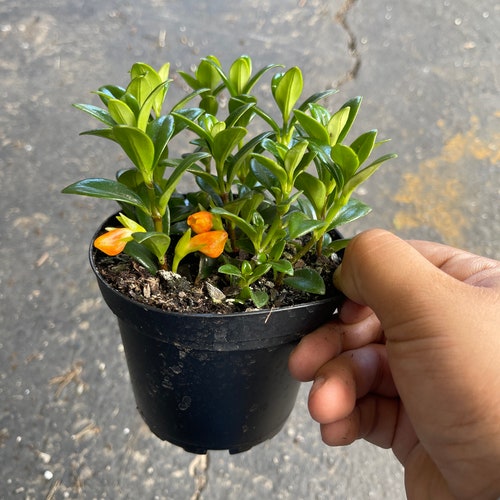
For goldfish plants to flourish, the soil should be moist, but not soaked through. During the spring and summer, when they are actively growing, they consume a greater quantity of water than they do during the fall and winter, when they are dormant.
The frequency with which a plant requires watering is influenced by a number of factors, including the size of the container, the relative humidity, and the amount of light.
How to Water the Goldfish Plant Without Overwatering
- When the top inch of soil has a dry feeling to the touch, it is time to water the plant.
- It is best to use water that is at room temperature and to avoid using hard water, since this can leave mineral deposits on the soil and cause the roots of the plant to get damaged.
- Because moist leaves might encourage the growth of fungal infections, you should only water the plant where it is rooted and steer clear of the foliage and blooms.
- Allow the excess water to drain out of the pot through the drainage holes, and discard any water that gathers in the saucer after the pot has been drained.
- If you want to know when it’s time to water again, you may either use something called a moisture meter or just stick your finger into the ground.
Importance of Maintaining Consistent Moisture Levels
Constant hydration is necessary for the Goldfish plant to achieve its full potential in terms of both health and development. The plant may wilt and die if it receives insufficient water, while excessive watering can lead to root rot and other fungal illnesses. If there is a shift in the degree of humidity, the leaves of the plant may get yellow and eventually fall off.
Therefore, it is essential not to let the soil dry out completely in the time in between waterings, and it is also essential to maintain a consistent level of moisture in the soil without allowing it to get muddy. If you give your Goldfish plant the proper amount of water on a consistent basis, it will continue to thrive and bear flowers throughout the entire year.
Lighting
Type of Lighting the Goldfish Plant Needs

It is crucial for the health of goldfish plants to have bright light that is indirect. Insufficient light can stunt plant growth, causing the leaves to become pale and spindly. On the other hand, direct sunlight can scorch the leaves. As a consequence of this, it is absolutely necessary to position the plant in a bright area; however, it should not be placed in full sunlight.
How to Properly Position the Plant for Optimal Growth
- North or east-facing windows provide bright, indirect light for the plant. If your home has little natural light, you can use fluorescent or LED grow lights to provide the plant enough light.
- Direct sunlight can burn and scorch the plant’s leaves.
- Rotate the plant every few weeks to evenly distribute light and prevent uneven development.
- Too much light may cause the plant’s leaves to turn yellow or brown. Move the plant to a shadier area and watch for improvement.
Related: Monkey Grass: Everything You Need to Know
Temperature and Humidity
Ideal Temperature and Humidity Conditions for the Goldfish Plant
Environments that are warm and humid are ideal for the growth of goldfish plants because these conditions are most representative of their natural habitat in tropical rainforests. The Goldfish plant thrives in temperatures between 60°F to 75°F (15°C to 24°C). The temperature range is optimal for growing the plant.
Tips on How to Maintain These Conditions
- Avoid cold breezes and air conditioning vents to keep the plant at the right temperature.
- Use a thermometer to monitor room temperature and modify plant placement.
- Use a humidifier to maintain the correct humidity level. You can also keep a tray of water nearby or sprinkle the leaves with a spray bottle.
- In winter, a humidifier near the plant or grouping multiple plants together can naturally boost humidity.
- To maintain humidity in a dry region, spray the plant’s leaves several times a day.
Related: 50 Best Low Light Indoor Plants | Low-Light Houseplants
Pruning
Why Pruning is Important for the Goldfish Plant
In order to properly care for a Goldfish plant, pruning is a crucial component. This is because pruning helps to maintain the plant’s structure and promotes healthy growth. It is possible to improve the overall appearance of the plant, encourage new development, and prevent the spread of illness by eliminating branches that are diseased, damaged, or have become overgrown.
Step-by-Step Guide on How to Prune the Plant
- Use rubbing alcohol to disinfect your pruning shears or scissors to stop the spread of illness.
- Look for branches that are dead, broken, or just too far out of control to prune back. Their absence of greenery or brownish hue make them easy to see.
- Just above a healthy leaf node or branching point, make a clean 45-degree cut with your pruning shears or scissors. Doing so will promote new growth and forestall the regrowth of the branch.
- Make use of your fingertips or a pair of pruning shears to remove any yellowed or otherwise damaged leaves. This will reduce the likelihood of disease spreading and enhance the plant’s aesthetic appeal.
- To stimulate new growth and healthy root development after pruning, give the plant a good soaking.
Related: Top 25 Gorgeous Green Flowers
Propagation
How to Propagate the Goldfish Plant
Stem cuttings, which may be grown in either soil or water, are the most effective method for propagating goldfish plants. You can develop new plants for your home or to give as gifts to relatives and friends by propagating your Goldfish plant. This is a fantastic method to increase your plant collection.
Step-by-Step Guide on How to Propagate the Plant
- Remove a healthy stem from the parent plant by cutting it just below a node with a sharp pair of pruners. The cutting needs to be between 4 and 6 inches in length with many leaves still attached.
- Take off the lower leaves, leaving just a few at the very top of the stem.
- Propagate the cutting in water by inserting the stem into a container of sterile water, such as a vase or jar. For soil propagation, dust the cut end of the stem with rooting hormone powder before planting it in a small pot of well-draining potting mix.
- Mold and bacteria can develop in water, so it’s important to replace it every few days if you’re propagating in that medium. To establish a humid atmosphere when propagating in soil, lightly moisten the cutting and cover the pot with a plastic bag.
- The cutting needs to be given time to root before it can be transplanted. When the cutting’s roots reach about an inch in length, you can move it to a larger container with well-drained potting soil.
- To promote development and ensure the plant’s continued health, place the new plant in indirect, bright light and water it frequently.
Caring
Common Issues That Goldfish Plants May Face
Goldfish plants are generally tough and resilient, but they can run into a few common problems including pests, illnesses, and environmental stresses. Despite this, goldfish plants are still a good choice for those looking for a plant that can withstand a lot of abuse. Insects such as spider mites, mealybugs, and aphids have the potential to cause damage to the plant. On the other hand, diseases such as fungal infections, root rot, and bacterial leaf spot have the potential to cause damage.
The plant may also become wilted, lose leaves, or develop brown spots if it is subjected to environmental stresses such as poor light, low humidity, or high temperatures.
Tips on How to Identify and Fix These Issues
- Pests: If you notice any little bugs, webs, or sticky residue on the leaves, you may have a pest problem. You can remedy the problem by isolating the plant and spraying it with neem oil or insecticidal soap.
- Diseases: Take note of any symptoms of plant distress, such as leaf browning, black spots, or powdery mildew. Get rid of the afflicted parts of the plant and spray it down with a fungicidal soap to repair the problem.
- Environmental stressors: Take note of any wilting, leaf drop, or brown spots on the leaves. In order to solve the problem, you should modify the plant’s environment by giving it more light, raising the humidity, or changing the temperature.
- Overwatering: Root rot can cause yellowing of the leaves and eventual plant death, so be on the lookout for these symptoms. To solve this problem, you could space out your waterings more to let the soil dry out.
Related: Unleash Your Creativity: 33 Backyard Landscaping Ideas to Try

